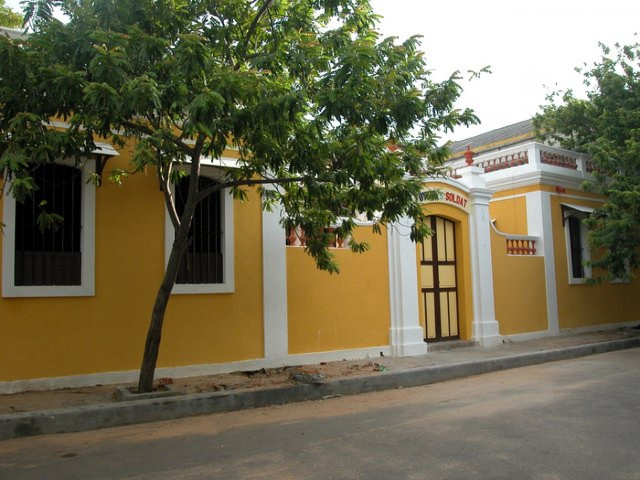Pondicherry, Je T’Aime: An Unexpected Slice Of France In India

French President Francois Hollande’s first official state visit to India will not include a trip to Pondicherry. Hollande has more important things on his mind – like selling billions of dollars of high-tech fighter warplanes and nuclear power plants to New Delhi.
However, a visit to the eastern coastal region of Pondicherry would have been highly symbolic and appropriate, since it was once a French colony and still maintains a French ambience centuries later.
In 1673, as European nations ventured out to sea to conquer foreign lands, the French took over Pondicherry at the invitation of a local sultan. By the following year a man named Francois Matin became its first French governor. Over the next 270 years, as the British acquired greater and greater slices of India for themselves, Pondicherry remained a quiet French paradise.
The French, at one time or another, also ruled over a few other parts of India, including Yanaon (near Pondicherry), Mahé on the Kerala Coast, and Chandranagar in West Bengal.
France, however, was engaged in constant conflict with the Dutch and the British in India, limiting any efforts to expand their Indian empire significantly. Paris put more emphasis on its possessions further east, like Indochina, while acquiring colonial assets in other parts of the world as well.
The French did not officially relinquish the port city of Pondicherry back to India until 1954, seven years after India gained its independence from Great Britain.
However, French is still spoken in Pondicherry, while Bastille Day is celebrated and bakeries and restaurants offer Parisian fare. There is even a statue of Joan of Arc, France’s national heroine, in the town.
Ratnakar Sadasyula wrote on the Boloji website: “The entire town [of Pondicherry] is divided into two sections, the French quarter and the Indian quarter. The entire town is patterned on the French grid pattern. To a visitor the French influence is unmistakable. The French names of the streets, the French style villas, the afternoon siesta when nothing stirs, the bicycles on the streets. One could be forgiven for thinking that they are in some old Mediterranean town popularized by Hollywood. In the French quarter, the buildings are typically colonial style with long compounds and stately walls, the like of which we see only in Hollywood romances.”
He added wistfully: “Truly walking through the streets of Pondicherry is like traveling in a time machine, we see the type of houses we have only read about. This is one place that still has not been ravaged by tourism. Churches co-exist with temples, the cops wear French hats, one can stroll across the beach road leisurely. French and Tamil are equally spoken, while this must be one of the few places where one can see the French flag fluttering in India. [Pondicherry] truly represents the confluence of the East and West.”
An estimated 10,000 French people currently live in Pondicherry -- interestingly, most of them practice the Hindu faith rather than Catholicism.
Pondicherry recently received a huge boost to its profile through the Hollywood blockbuster film “Life of Pi,” parts of which were filmed in the town.
© Copyright IBTimes 2024. All rights reserved.





















